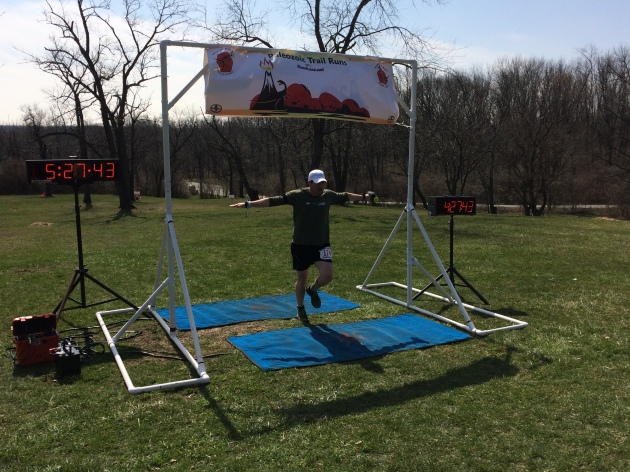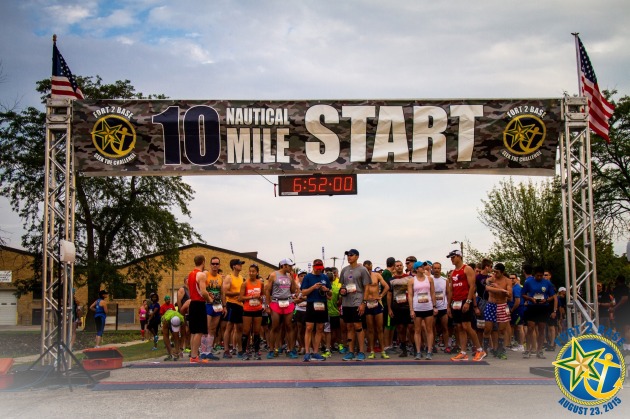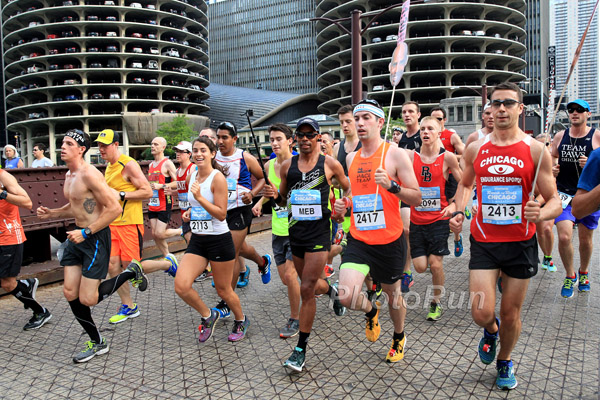I Can Fix This: 2016 Rock ‘n Roll Chicago Half Marathon
July 25, 2016 10 Comments
This is a post about how to inject some much-needed vitality and vigor into the Rock ‘n Roll Chicago Half Marathon. But first:
#TeamChance
For their third year, the Jackson Chance Foundation partnered with the Humana Rock & Roll Chicago Half Marathon as an official charity and asked me to be their running coach. I happily accepted and once again created running programs, led weekly runs, and provided tips on training and preparation. The foundation’s goal, in their own words:
“Jackson Chance Foundation’s (JCF) mission is to enrich the lives of families with babies in the neonatal intensive care unit (NICU) by allowing them to spend more time with their baby. JCF created the NICU Transportation Program to partner with hospitals and alleviate the transportation expenses of all families while their child is in the NICU by providing parking and CTA/Metra vouchers. The programs are fully funded by JCF. Currently, the foundation’s program benefits the Ann & Robert H. Lurie Children’s Hospital of Chicago. Jackson Chance Foundation is an Illinois non-for-profit, tax exempt 501(c) (3) organization.
By contributing to the Jackson Chance Foundation, you help families be with their critically ill child, thus enriching and potentially extending their life.”
For donations or more information, please visit their website.
Another Year of Wondering, Where’s the Rock?
It was a beautiful spring and early summer for training, and throughout it I had the pleasure of exploring Chicago’s Lincoln Park with runners in tow, learning about them as people and enjoying the city’s pristine parks and lakefront path. There was actually one run where I mentioned to Alan, who would join almost every organized run, that I was looking forward to spending some time outdoors, given how lovely the weather was. The conversation paused for a second as we both realized we were doing just that, in that moment, as we logged miles under the sun.
On July 17, I lined up for my fourth running of Chicago’s Rock & Roll Half Marathon, which until recently was the only 13.1-mile race run primarily within the city’s core. Every other half marathon takes place either Lincoln Park or the lakefront paths south of the city, which are open to everyday cyclists and walkers. The race has changed since 2010 in ways that perhaps indicate broader changes in the running industry.
The first time I ran this race, I was one of over 18,000 finishers, making the race one of the largest in the city and nation. It was the only distance offered, won in its previous and inaugural year by Kara Goucher in 1:08:04, ahead of any other competitor, male or female. There was something electrifying about it, as if the amplifiers in the marketing materials could short circuit and infuse us all with speed.
Since then, the event has seen itself diluted considerably. Although the course has improved, with less of it run on thin, open park paths and more in the city’s famous and dense Loop, the event has lost a lot of its energy. In 2014, the race gave its 13,866 half marathon finishers a half-mile stretch of speakers, all arranged to play the same hard-hitting song to motivate runners for more than the standard 30 seconds it takes to be out of earshot of a performer. I was lucky to run through that section to the galloping rush of Ozzy’s “Crazy Train” and the thundering sludge of Metallica’s “Sad But True.” It was amazing and an instant reminder of how races can use creative solutions to not only bolster the race experience, but in this case, elevate and sharpen their brand. Plus, they got Shalane Flanagan to run it, so I was awestruck and giddy to follow in her speedy footsteps.
In 2015, only 12,025 runners made it to the finish line, a slight dip from the year before. I remember feeling like the “rock” had been left out of the experience, with electronica playing constantly during the expo, the speaker stretch now booming Whitney Houston and the organizers tapping Andy Grammer as the headline act for the post-race party. I understood that rock was either convalescent or comatose in popular culture, so I hoped they would at least change the name of the race, like they did for many years with their Nashville equivalent, the Country Music Marathon. However, they made up for all of this by roping in Olympian and Boston Marathon Champion Meb Keflezighi to pace the 1:30 group, which I joined for the first four miles.
This year, it seemed like organizers were out of both ideas and money. There were no big name runners leading the pack, no legends to pace us, no big headline act, no half-mile stretch of motivational rawk, no abundance of bands …
If this is starting to sound petulant, let me explain that these are merely observations and not complaints. After all, I don’t really care about any of this. All I need is a 13.1-mile stretch of road or trail, a few aid stations, and a chip to record my time and I’ll finish with a smile. And an hour and 34 minutes after starting, that’s what I did. But I was left wondering. It’s not necessary that the race director hire Amy Hastings as a pacer, or that Tool play to a crowd of sweaty and tired athletes, or that every mile be dotted with cover bands playing Bon Jovi and the Killers.
But when the market is as crowded as it is lately, this race has to double down on its brand or risk runners losing too much interest. Lucky for them, the half marathon is still growing in participation nationwide. The 2015 State of the Sport assembled by Running USA states that “the half marathon continues to grow with an annual increase of 4% finishers (2.046 million, another new high) with an astounding 61% female participation.”
In 2016, however, 11,059 runners finished the Rock & Roll Chicago Half Marathon, almost 1,000 fewer than the year before and over 7,000 fewer than in 2010. To draw more people to the event in recent years, organizers have added shorter distances and spread them over two days, with a 5K on Saturday and a 10K run on Sunday at concurrently with the half marathon. Across all three distances, there were about 16,500 finishers, still fewer than in 2010.
It seems reasonable to suggest that the increase in participation in the half marathon is not due to a growing field at established events, but with the sprouting of new races. For example, when I started running in 2009, there were only four half marathons in Chicago. Today, there are twelve just in the city, and many more in the surrounding suburbs, the majority of which sport less expensive registration fees than Rock & Roll for obvious reasons.
I don’t know if this race is profitable, but I assume it is because it’s now in its eighth year. But as I ran through the course this year and saw how threadbare it was in comparison to years past, I couldn’t help but wonder if this was the result of an organization cutting its costs in the wake of shrinking margins. I’m not an economist, but it seems that if the race wants to keep its bottom line healthy, it has to either draw in more people, increase its fees, cut services, or a combination.
Though I haven’t done the research, I’m sure this is not unique to Chicago. The running boom is happening everywhere nationwide and as a consequence, large, established races have likely seen some participation siphoned as interest shifts to newer races with lower fees that offer a similar experience. In order to stay relevant, Rock & Roll needs to do something to either change the game or hone their brand. In 2014, as I ran alongside Metallica’s bluesy thrash, I was reminded of how one great idea can completely change your opinion of an event.
Here are a few suggestions, some free and others unreasonable and cost prohibitive:
- Upon registration, let runners pick their favorite genre of rock & roll (classic, grunge, metal, indie, acoustic, pop, etc.) and make different bibs for each.
- Encourage aid stations to theme themselves according to the genres of rock established above.
- Make Spotify playlists for each genre and share them with runners as they register.
- Let runners sign up in groups of 3-5 as a “band.” In the results page, have a separate “band results” page that adds up every band member’s finishing time. Encourage bands to dress up and run together.
- Upon registration, ask every runner to provide a “pump up” song and their target time. At mile 13, have a timing mat that calculates if a runner is going to break that target time, and if so, play 10 seconds of their pump up song to get them to the finish (and I realize that not everyone will get their pump up song played, much like not everyone has their name announced at the finish line).
- The first seven miles are in the Loop, which doesn’t allow for bands or noise of any sort. Rearrange the course to add more opportunities for music and bands. Music is the brand’s raison d’être, so embrace it!
- Convert pace cars into a mobile concerts like they do in theme parks and blare some truly sick rock for those willing to run alongside them. Release at variable paces so everyone gets the opportunity.
- The 90s are back and with a vengeance. I can’t imagine it’s that expensive to hire Better Than Ezra, the Verve Pipe or Third Eye Blind to be your headlining act (also, I heard this year’s band play “Yellow” by Coldplay twice. I shouldn’t have to explain why this is wrong).
- Hire Pearl Jam to play a 3-hour set afterward.
I look forward to seeing these implemented for the 2017 race. You’re welcome.






















